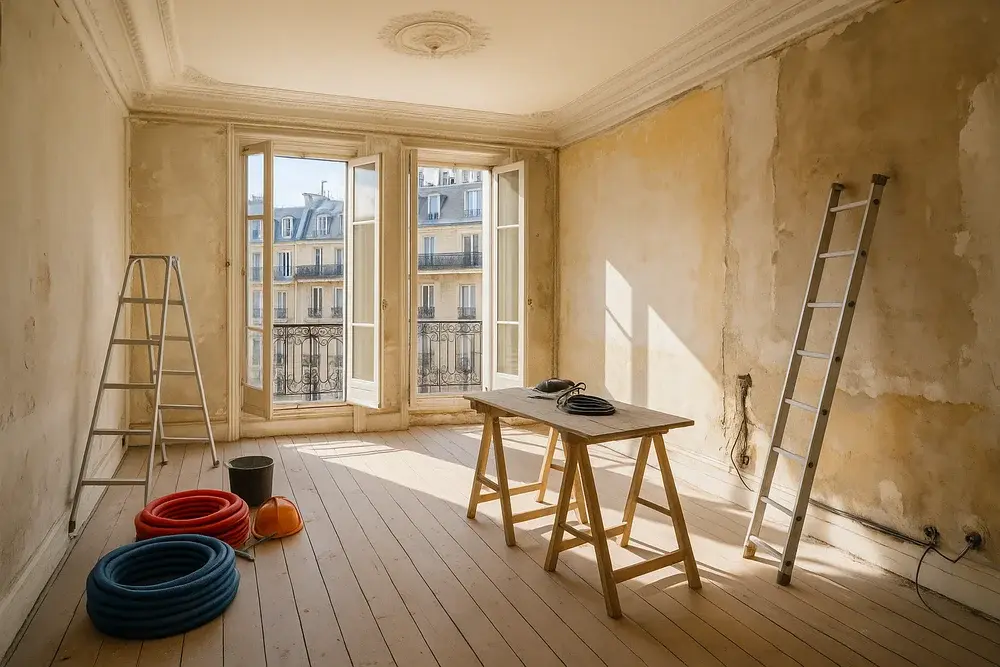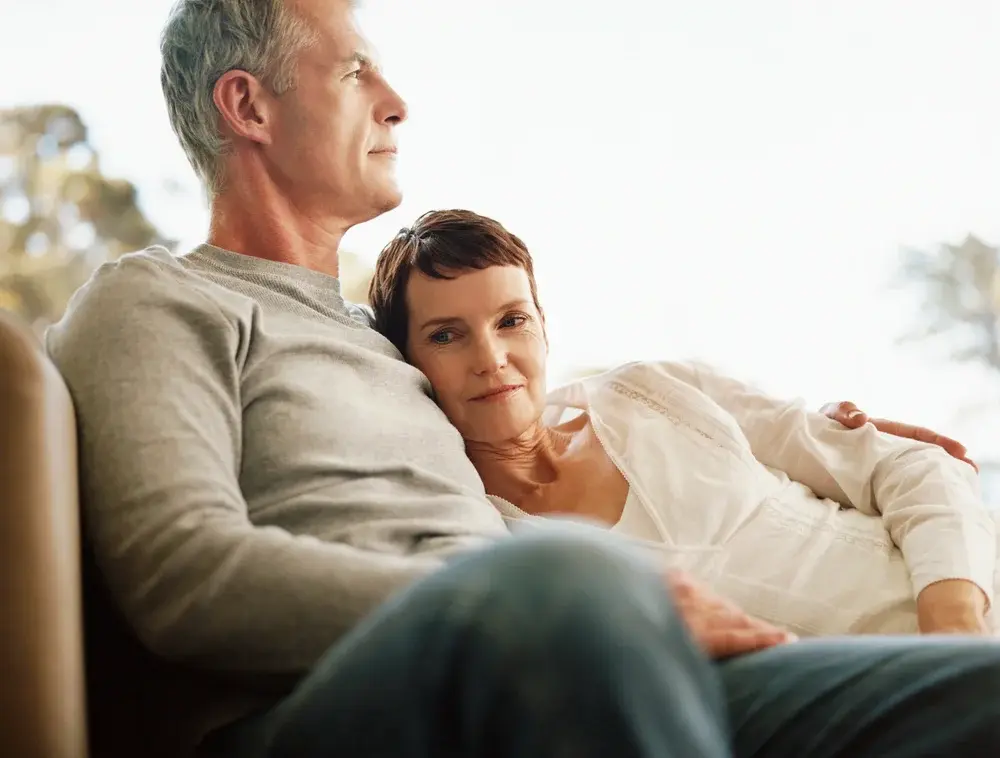The different styles of Parisian buildings
Paris is renowned for its incredible architectural richness that is revealed through the streets, boulevards and quays that border the Seine. Each neighborhood tells the story of an era, each facade reveals a story. This article aims to dive into the heart of Parisian architecture by exploring the different styles of buildings that shape the visual identity of the French capital. From the Baroque opulence of the private mansions of the Marais to the elegant simplicity of the Haussmann buildings that dominate the Grand Boulevards, through the modernist touches of the 20th century that dot the city, each architectural style testifies to artistic movements, technological advances and urban visions that have spanned the centuries. Through this article, we invite the reader on an architectural walk, revealing how each era contributed to the unique aesthetic and timeless charm of Paris.

Old Paris (1400 - 1650)
In the heart of old Paris, between the years 1400 and 1650, the city was a complex fabric of narrow and winding streets, lined with buildings that bear witness to the transition from the Middle Ages to the Renaissance.
Few buildings from this period remain, a large part of them having disappeared during the fight against Parisian unsanitary conditions and at the time of the Haussmann restructuring.
Reading the architectural elements of this period is difficult, as many houses or buildings have been redesigned, enhanced, and modernized.
The characteristic features of the style of buildings in Old Paris
- Building door with studded panels like this door in the 8, rue Sauval in the 1st arrondissement
- Timber wall: here, the buildings located 11 and 13, rue François Miron in the 4th.
- Gable facade on the street: a good example between 31 and 41, rue Galande in the 5th arrondissement.
Some beautiful architectural examples of old Paris:
- Possibly the oldest house in Paris: 51 Montmorency Street, 3rd
- At the time of Henry IV: 8, place des Vosges in the 4th arrondissement
- 97 Saint-Honoré Street 75001
Parisian buildings in the time of Louis XIV (1651 - 1715)
The era of Louis XIV, which lasted from 1651 to 1715, marked a prosperous period in the history of Parisian architecture, characterized by opulence, symmetry and classicism. The architecture of this period was intended to be a mirror of royal ambitions. The emphasis is on order, measure and harmony, inspired by the classical principles of Greco-Roman antiquity.
The influence of Louis XIV on Parisian architecture extended to major urban planning projects and public buildings, such as the Place Vendôme And the Place des Victoires, which are arranged according to the principles of regularity and size specific to the time.
The distinctive signs of the style of Parisian buildings at this time
- Cut stone wall as in 91 Quincampoix Street in the 4th
- Unified panel carpentry door: 12, rue de Sévigné 75004
Parisian architectural examples from the time of Louis XIV
Large religious complex located 2 - 14 rue de la Ferronnerie in the 1st arrondissement
A sober and elegant building enhanced by the ironwork at 23 Danielle-Casanova Street 75001.
{{cta-vert-en}}
The style of Parisian buildings in the 18th century

The 18th century in Paris was a time of refinement and evolution in residential architecture, marked by the emergence of the Rocaille style and the gradual return to classicism at the end of the century. This century, characterized by the Enlightenment, saw Parisian architecture adapt to the tastes and needs of a society in search of elegance, comfort and personal expression.
The Parisian buildings of this period are distinguished by an increase in the attention paid to decorative details and to the pleasantness of living spaces. The Rocaille or Rococo style, with its elaborate ornaments, graceful curves and taste for the picturesque, is evident in the interiors of Parisian homes, but also in facade elements such as the ironwork on the balconies, the mascarons and the sculpted shells adorning the doors and windows.
At the same time, the exterior architecture of buildings began to incorporate more subdued classical elements towards the end of the century, foreshadowing the neoclassical movement. Facades are becoming more homogeneous, with the widespread use of ashlar. They are often organized around a central axis, highlighting the main entrance with columns or pilasters. The roofs are less steep than in previous centuries, with discreetly integrated dormers.
Building plans are also evolving to offer a better distribution of rooms and a clearer separation between reception areas and private apartments.
The 18th century also saw the rise of rental properties, which began to shape the urban fabric of Paris. These buildings, built by private investors, are designed to maximize living space on often narrow plots, giving rise to common courtyards and staircases that still characterize Parisian housing today.
The characteristic features of 18th century architecture
- carpentry door with panels and rocaille ornaments as in 4, rue Royer-Collard in the 5th (designed by master mason René Baudoin, 1734)
- Semicircular windows (describing a semicircle): around 1720 the building of 115 Saint-Honoré Street in the 1st arrondissement.
- Affirmation of the bare wall by fine horizontal splits (hollowed lines) as in 64 René-Boulanger Street In the 10th.
- Antique-style bas relief
- Back to lower rectangular windows like in 137 Vieille-du-Temple Street In the 3rd.
- Investment building: a good example at 11 Place du Marché-Sainte-Catherine In the 4th
{{cta-bordeaux-en}}
Buildings in Paris in the 19th century
The 19th century in Paris is a period of radical transformation, marked by industrialization, accelerated urbanization and the ambitious urban renewal program led by the Baron Haussmann under the Second Empire. This era saw the emergence of an architectural style that combined functionality, aesthetics and an overall urban vision, leaving an indelible mark on the Parisian landscape.
Neoclassicism and the Louis-Philippe period (1792 - 1848)
At the beginning of the century, the Parisian architecture continues to explore the variations of the neoclassical style, with a predilection for symmetry, order, and clarity of forms. The buildings of this period, often built of cut stone, have simple and elegant facades, colonnades and pediments that recall Greco-Roman antiquity.
The characteristic features of Neoclassicism and the period of Louis-Philippe (1792 - 1848)
- Pilastered portal (flat column forming a slight projection) as at 42, rue du Bac in the 7th arrondissement:

- Classic French or Italian style window as can be seen on the 2nd floor of the building of 1, Franz Liszt Square In the 10th.
- The covered passages: like The Véro-Dodat gallery at 2, rue du Bouloi In the 2nd
- Cast iron guardrail, balcony and decorative element: 42, rue du Bac, 7th

- Start of the 1st Renaissance repertoire at 24 Linné Street and 5 and 7, place Jussieu.
- Neo-Renaissance style at 27 Victor Massé Street In the 9th
The Haussmann Revolution (1853 - 1870)
However, it is the Haussmann renovation, started in 1853, which will profoundly reshape Paris. Haussmann, prefect of the Seine, undertook extensive work aimed at modernising the capital: drilling wide avenues, creating squares, parks, sanitation and setting up a water and sewage network. The Haussmann buildings, characteristic of this period, stand out for their uniformity and their monumentality. These buildings, erected along the new boulevards, feature regular facades, rolling balconies on the second and fifth floors, mansard roofs and imposing cornices. The interiors of the apartments reflect a concern for modern comfort, with high ceilings, wooden floors, moldings, and marble fireplaces.
The specific features of the Haussmann style (1853 - 1870)
- Large doors often integrating the mezzanine: 43 La Bruyère Street, 9th.
- Balcony running on the second and fifth floor:

The emergence of Art Nouveau (1882 - 1902)
At the same time, the Art Nouveau artistic movement emerged at the end of the century, bringing a new approach to architecture and design, characterized by curved lines, patterns inspired by nature and the innovative use of glass and iron. Buildings like the Castel Béranger by Hector Guimard (16, rue Jean de Lafontaine, 16th) illustrate this desire to integrate art into urban space, breaking with classicism to explore organic and dynamic forms.
The Specific Motives of Art Nouveau (1882 - 1902)
- Female figures different from caryatids: 16 Abbeville Street In the 10th
- Colored coatings: an example on the facade of a building in the Villa des Ternes in the 17th arrondissement:
.jpeg)
- Bow-windows as in 66 Mathurins Street In the 8th.
- Ceramic and flamed stoneware 14 Abbeville Street in the 10th arrondissement.
{{cta-vert-en}}
Architectural styles of Parisian buildings in the 20th and early 21st centuries
The 20th century in Paris is marked by a plurality of architectural trends, reflecting historical upheavals, technological advances and changes in social mentalities. This period witnessed a daring exploration of new materials, innovative techniques, and an unrelenting quest for modernity, which are reflected in the urban landscape by remarkable stylistic diversity.
From the Belle Époque to the Second World War (1900 - 1939)
During the Belle Époque, Art Nouveau reached its peak, closely followed by Art Deco in the 1920s and 1930s. These movements are evident in Paris through buildings with facades decorated with floral and geometric patterns, elegant structures and refined decorations. The Chaillot Palace, built for Exposition Universelle from 1937, is an example emblematic of Art Deco, with its symmetrical shapes, sculptures and ornaments. This pre-war era assumed a flourishing eclecticism.
The distinctive features of Belle Époque architecture (1900 - 1918)
- Corrugated treatment of facades and corners: 23 Messine Avenue in the 8th by the architect Jules Lavirotte, sculpture by Léon Binet in 1907.
- Glass door and soft ironwork at 33 Champ-de-Mars Street in the 7th arrondissement, by Octave Raquin in 1910.
- Naturalistic ornaments:
- Liberation of the upper parts of the buildings: 132, rue de Courcelles, 17th by the architect Théo Petit in 1907.
.webp)
- Commercial buildings such as 118 Réaumur Street in the 2nd, by the architect Charles Guimard de Montarnal who won an award in 1900.
From one war to another (1918 - 1940)
The residential buildings of this period improve the comfort and quality of life of the inhabitants; thanks to better lit and ventilated apartments, innovations such as the introduction of central heating and elevators.
This period is also a period of experimentation and openness to new construction technologies, making it possible to create more daring structures. Despite the shadow of the economic crisis of 1929 and growing political tensions, the Parisian architecture between 1918 and 1940 testifies to an abundance of optimism and creativity, reflecting the spirit of an era in search of renewal and artistic expression.
The distinctive signs of this era:
- Horizontal strip or angular window: 96 Notre-Dame-des-Champs Street in the 6th, by Léon-Joseph Madeline in 1939.
- Use of brick as 6 bd Ornano in the 18th, by André Granet in 1929.
- Ironwork with geometric designs as in 19, bd. Raspail in the 7th arrondissement, by Henri Sauvage in 1906
{{cta-bordeaux-en}}
The style of Parisian buildings during the Trente Glorieuses (1945 - 1974)
The post-war period and the Thirty Glorieuses mark a period of intense reconstruction and modernization. Functionalist architecture and the modern movement promote clean designs, the use of concrete, steel, and glass, and the functionality of spaces. Large residential complexes, designed to respond to the housing crisis, embody this period with their minimalist forms and rational organization of space.
In the 1970s and 1980s, Paris witnessed the birth of large-scale projects that reinterpreted urban space, such as the Georges Pompidou Center, designed by Renzo Piano and Richard Rogers, which shakes up conventions with its colorful external structure displaying pipes and escalators. This period also saw the construction of La Défense, a business district characterized by its glass and steel towers, symbols of modernity and high-tech architecture.
The characteristic features of the Trente Glorieuses buildings:
- Prefabricated industrial concrete and Altuglas balconies as at 60 Avenue Henri Martin, 16th
.jpeg)
- Abandonment of the alignment with the street and a break in scale: the Seine front in the 15th
.jpeg)
Some emblematic buildings of the Trente Glorieuses:
89 -93 Boulevard Raspail in the 6th arrondissement by Louis Thomas in 1957
67 Berrault Street In the 13th arrondissement in 1958
33 Croulebarbe Street In the 13th
The styles of Parisian buildings at the turn of the millennium (after the 90s)
The turn of the millennium is marked by a growing awareness of the need for sustainable development and by the integration of ecological concerns into architecture. Projects like the National Library of France, with its four towers in the form of open books, illustrate this desire to combine architectural innovation and respect for the environment.
Characteristic features of Parisian buildings at the turn of the millennium:
- Variety of volumes such as the buildings on Promenade Claude Levi-Strauss in the 13th arrondissement:

- Back to the color as in 9 Françoise Dolto Street In the 13th
- Quotes and humor like in 11 bis rue Pierre Nicole in the 5th where fake ruins were built in the hall.
Some buildings from this period:
- 25 Ambroisia Street In the 12th by Christian de Portzamparc in 1994
- 39 - 41 Longues-Raies Street by Philippe Dubus in 2007
Over the centuries, the Parisian architecture knew how to reinvent itself. It is the reflection of an eternally young city despite its thousand-year-old history. From Medieval to Modern, including Classical, Baroque, Baroque, Haussmannian, Art Nouveau and Art Deco, each era has left its mark, contributing to wealth and diversity of the Parisian urban landscape. The Parisian buildings are not simple structures; they are witnesses of the artistic revolutions, technological advances and social changes that have taken place in the French capital.
{{cta-vert-en}}
From the majestic simplicity of classical buildings to the structural audacity of modern and contemporary buildings, Paris continues to define and redefine itself, offering an unparalleled architectural panorama.
Numerous references have been drawn from the book “The Grammar of Parisian Buildings” by Claude Mignot published by Parigramme.




